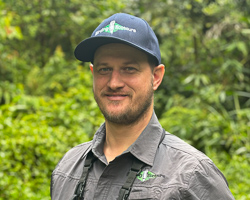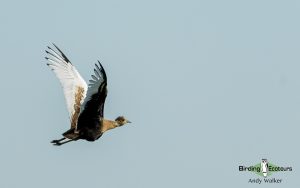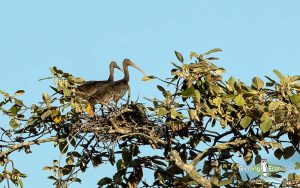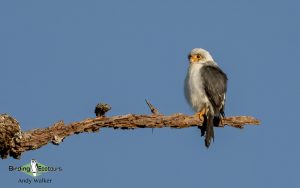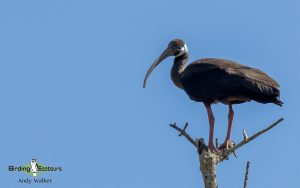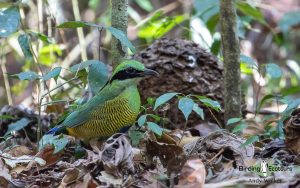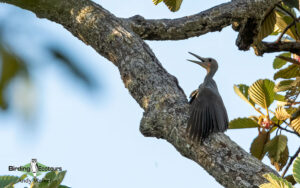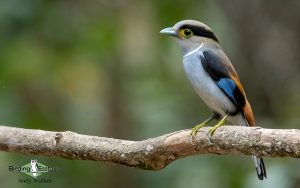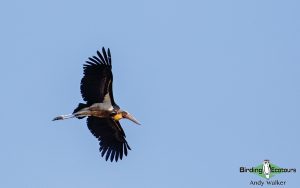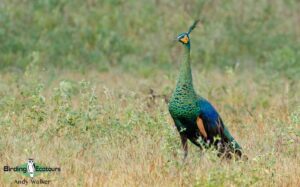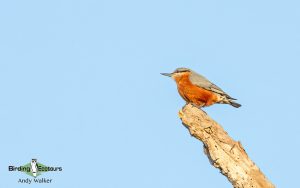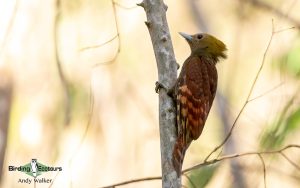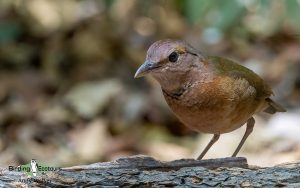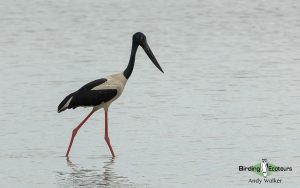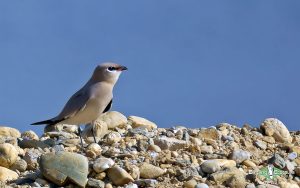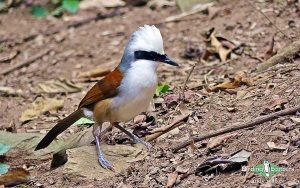Birding Tour Cambodia: Regional Specials and Globally Rare Birds
Go to: Cambodia Birding Tours | Birding Tours in Asia | All our birding tours
Birding Tour Cambodia: Regional Specials and Globally Rare Birds
January/December 2026
This birdwatching tour to Cambodia starts in Siem Reap and ends in Phnom Penh. Our Cambodia bird tour focusses on finding as many of the special birds of Cambodia, including mega world birds like Giant Ibis, White-shouldered Ibis, Bengal Florican, Green Peafowl, Sarus Crane, Milky Stork, Greater Adjutant, Red-headed Vulture, Slender-billed Vulture, White-rumped Vulture, White-rumped Flacon, Spotted Wood Owl, Oriental Scops Owl, Coral-billed Ground Cuckoo, Bar-bellied Pitta, Blue-rumped Pitta, Blue Pitta, Eared Pitta, Mekong Wagtail, Cambodian Tailorbird, Red-vented Barbet, Indochinese Barbet, Black-headed Woodpecker, Pale-headed Woodpecker, Great Slaty Woodpecker, Black-browed Fulvetta, Indochinese Yuhina, Silver-breasted Broadbill, Long-tailed Broadbill, and Hainan Blue Flycatcher.
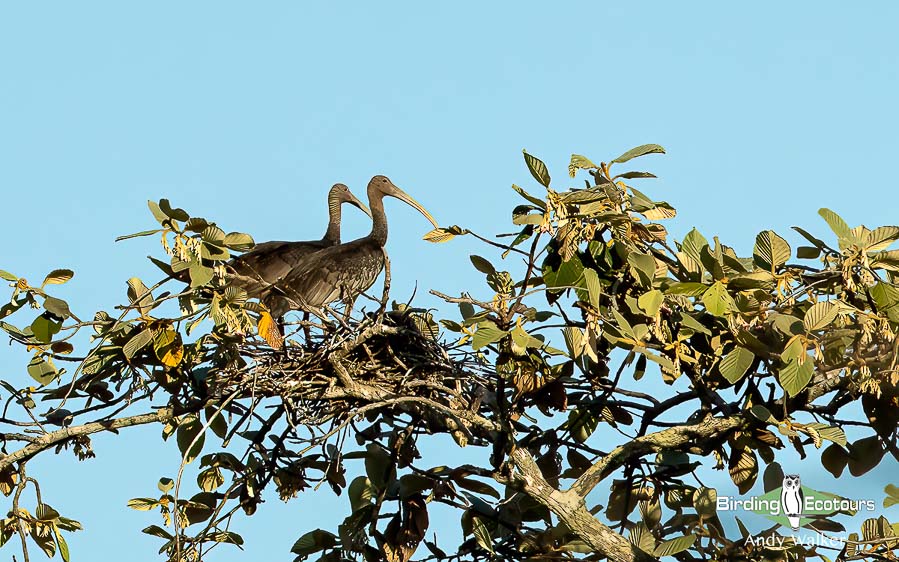
The birding in Cambodia is excellent and Cambodia offers the best (and sometimes only) chance to see most of the above birds anywhere in the world, so this destination should be firmly placed on the list of places to visit for the discerning world birder. It also definitely rates highly as one of the best places for birding in Asia. In addition to the above really special birds, there are loads of other birds to expect on the tour, with around 300 bird species possible on this Cambodia bird tour, many of these are birding highlights in their own right!
This tour will also be supporting local communities and wildlife conservation through responsible ecotourism.
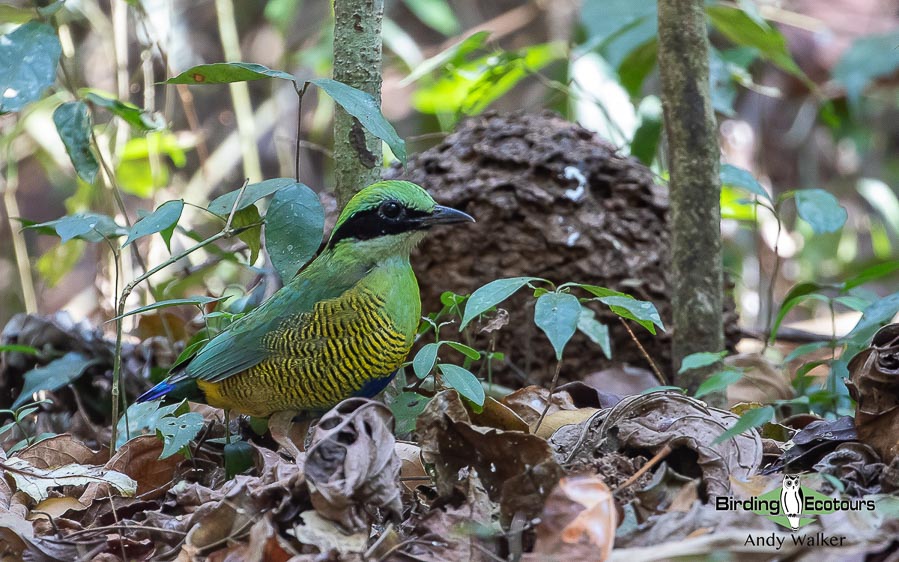
Detailed Itinerary (14 days/13 nights)
Day 1. Arrival in Siem Reap, Cambodia
A non-birding day with your arrival into Siem Reap, where you will be transferred to our comfortable hotel for the night. We will meet in the evening for a group “welcome dinner” and discuss plans for the exciting birding that we will be experiencing over the days ahead.
Overnight: Siem Reap
Day 2. Full day birding at Angkor Wat complex
We will commence our birding close to Siem Reap at the world-famous UNESCO World Heritage Site, Angkor Wat, the world-renowned temple complex. It will be a gentle introduction to the birds of Cambodia, with many common species likely to be seen that we’ll no doubt become very familiar with over the next couple of weeks. Some of the other targets here include Hainan Blue Flycatcher, Asian Barred Owlet, Alexandrine Parakeet, Green-eared Barbet, Black-naped Oriole, Oriental Magpie-Robin, and White-crested Laughingthrush.
Overnight: Siem Reap
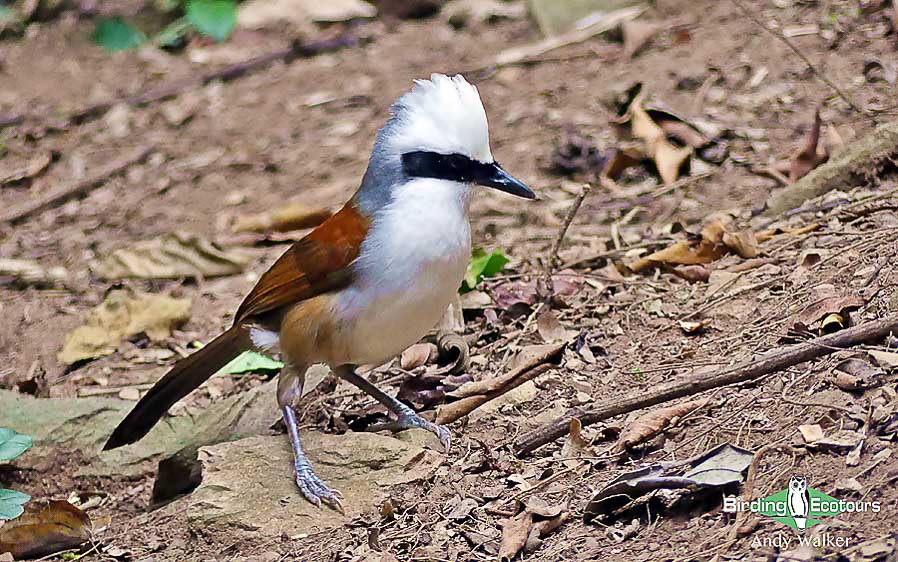
Day 3. Full day birding Prek Toal, Tonle Sap
An exciting day on the cards today. We will take a boat tour on Tonle Sap Lake, near Siem Reap to see a number of big (literally and figuratively) target birds, such as Spot-billed Pelican, Milky Stork, Painted Stork, Lesser Adjutant, Greater Adjutant, Asian Openbill, Black-headed Ibis, Oriental Darter, and Grey-headed Fish Eagle, as well as numerous cormorants, herons, and egrets. Hopefully there will be some good photo opportunities of some of the above species too.
Overnight: Siem Reap
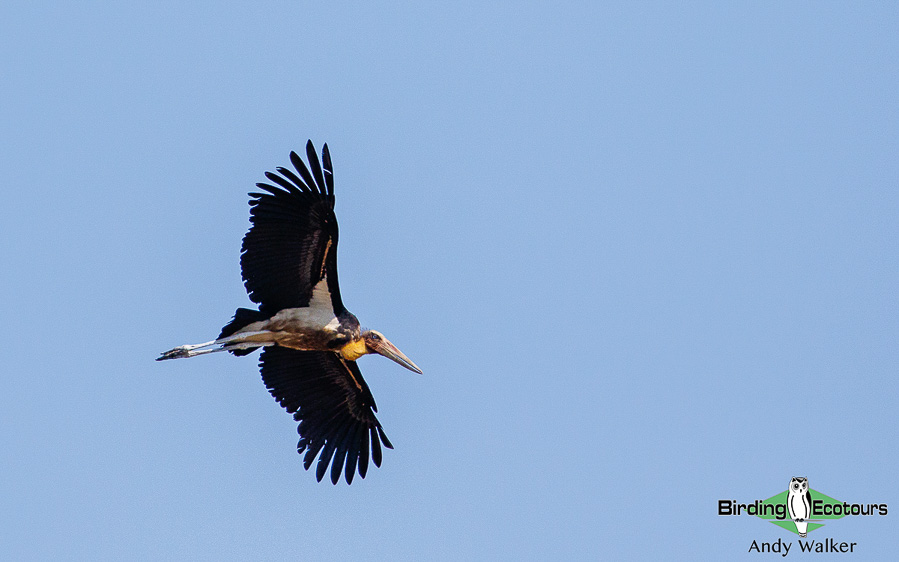
Day 4. Travel from Siem Reap to Changkran Roy (bird hide birding)
We will depart from Siem Reap for the night and to Changkran Roy, one of the last remaining forests near the city. The site is protected by the community, and we will spend the afternoon looking for birds here. In the evening, we will move to our tented camp near a waterfall where we will spend the night listening to the wildlife around us. Some of the target birds for today may include Bar-bellied Pitta, Oriental Bay Owl, Blyth’s Frogmouth, Green-legged Partridge, Silver-breasted Broadbill, Common Green Magpie, and with extreme luck, Coral-billed Ground Cuckoo.
Overnight: Changkran Roy (tented camp)
Day 5. Changkran Roy (bird hide birding) then travel to Siem Reap
We will spend most of the day birding at Changkran Roy, looking for the birds mentioned as possibilities for Day 4 (and many more), before heading back to Siem Reap in the afternoon.
Overnight: Siem Reap
Day 6. Full day birding Ang Trapaeng Thmor
Today we will be birding at Ang Trapaeng Thmor, another great site near Siem Reap, covering an area of 12,650 hectares of wetlands, grassland, dry dipterocarp forest, bamboo forest, and open water. The main targets we will look for here include Sarus Crane, Black-necked Stork, Milky Stork, Painted Stork, Knob-billed Duck, Black-backed Swamphen, White-browed Crake, Greater Painted-snipe, Spot-billed Pelican, Spotted Wood Owl, Greater Spotted Eagle, Eastern Marsh Harrier, and Pied Harrier.
Overnight: Siem Reap
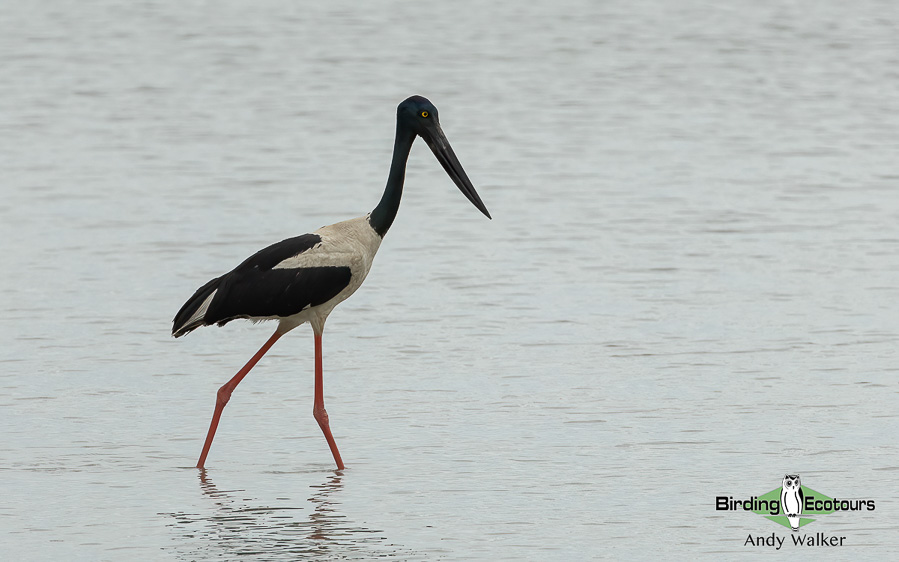
Day 7. Morning birding at Tonle Sap floodplains, then afternoon travel to Tmatboey
We will travel down to the Tonle Sap floodplains where our prime target will be the rare Bengal Florican. A species tough to connect with across its rapidly shrinking global distribution. There are numerous other birds likely to be present at the site, but we will be focused on finding this global rarity, first. Some of the other possibilities include Sarus Crane, Eastern Marsh Harrier, Pied Harrier, Oriental Plover, Common Buttonquail, and Red Avadavat.
In the late morning, we will travel to Tmatboey, where we will have the afternoon, the full following day, and an additional morning looking for the area’s special birds, of which there are many to search for across a large area.
Overnight: Tmatboey
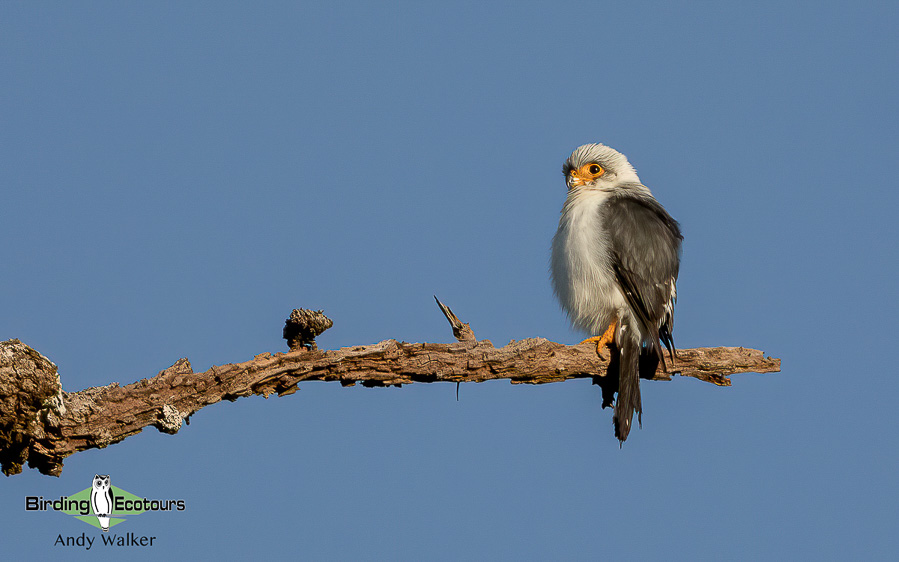
Day 8. Full day birding Tmatboey
We will have a full day birding the open-woodland here (woodland that is interspersed with rice paddies). This area is home to a huge number of birds. We will focus our efforts on seeing our key target birds and in doing so will likely see an awful lot of other top notch birds. Some of the major targets include Giant Ibis, White-shouldered Ibis, White-rumped Falcon, Spotted Wood Owl, Brown Fish Owl, Green Peafowl, Lesser Adjutant, Asian Woolly-necked Stork, Black-headed Woodpecker, and Great Slaty Woodpecker.
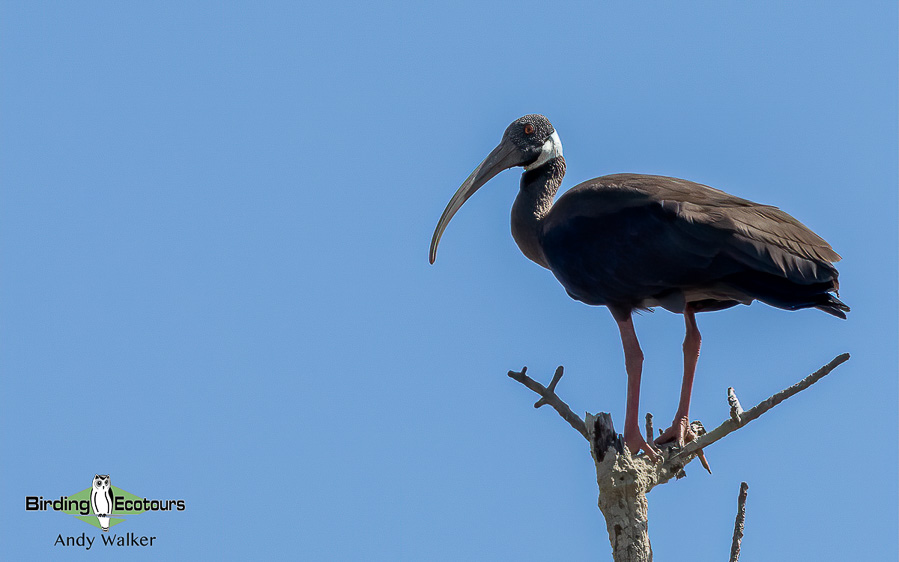
Numerous other targets occur here, and we are sure to see plenty of great birds. In addition to those already mentioned above, we could also see Chinese Francolin, Rufous-winged Buzzard, Yellow-footed Green Pigeon, Red-breasted Parakeet, Alexandrine Parakeet, Blossom-headed Parakeet, White-bellied Woodpecker, Steak-throated Woodpecker, Rufous-bellied Woodpecker, Yellow-crowned Woodpecker, Indochinese Cuckooshrike, Red-billed Blue Magpie, White-browed Fantail, Brown Prinia, Chestnut-capped Babbler, Oriental Scops Owl, Asian Barred Owlet, Brown Wood Owl, and many, many more!
Overnight: Tmatboey
Day 9. Morning birding Tmatboey, then afternoon travel to and birding at “vulture restaurant”
We will spend the morning continuing our birding around Tmatboey, which will continue to give us excellent birds right up until we must leave!
Our next stop will be rather interesting too, as we head over to a “vulture restaurant” a few hours’ drive away from Tmatboey. The main targets here are Red-headed Vulture, Slender-billed Vulture, and White-rumped Vulture. All three species are, incredibly unfortunately, considered Critically Endangered by BirdLife International. The “vulture restaurant” offers the best chance to see these very rare birds anywhere in the world. We might also get a visit to the “restaurant” by a Golden Jackal. We will spend the night in safari-style tents in the local area as this is a remote site.
Overnight: Boeng Toal (tented camp)
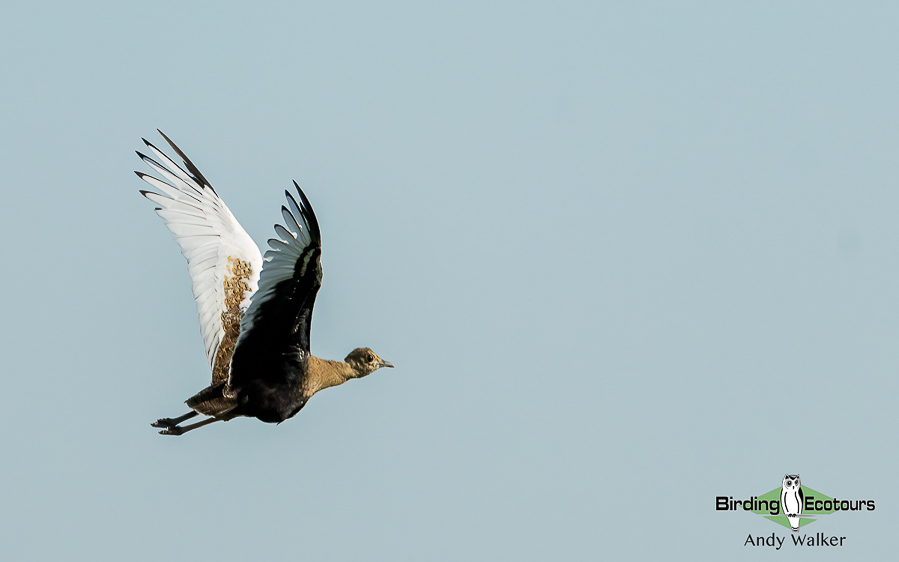
Day 10. Morning birding Boeng Toal, afternoon birding Kratie (Mekong River)
We will have the morning birding around Boeng Toal, hopefully gaining further looks at Red-headed Vulture, Slender-billed Vulture, White-rumped Vulture, and any other birds that are to be found in the area.
Once we have finished at Boeng Toal, we will travel across to Kratie on the Mekong River. Our main target here will be the Mekong Wagtail, but that will probably have to wait until our boat trip the following morning. We will again find lots of other birds here, hopefully including Small Pratincole, Little Ringed Plover, Streaked Weaver, Baya Weaver, and Asian Golden Weaver. We might also get our first chance for the relatively recently described Cambodian Tailorbird.
Overnight: Kratie
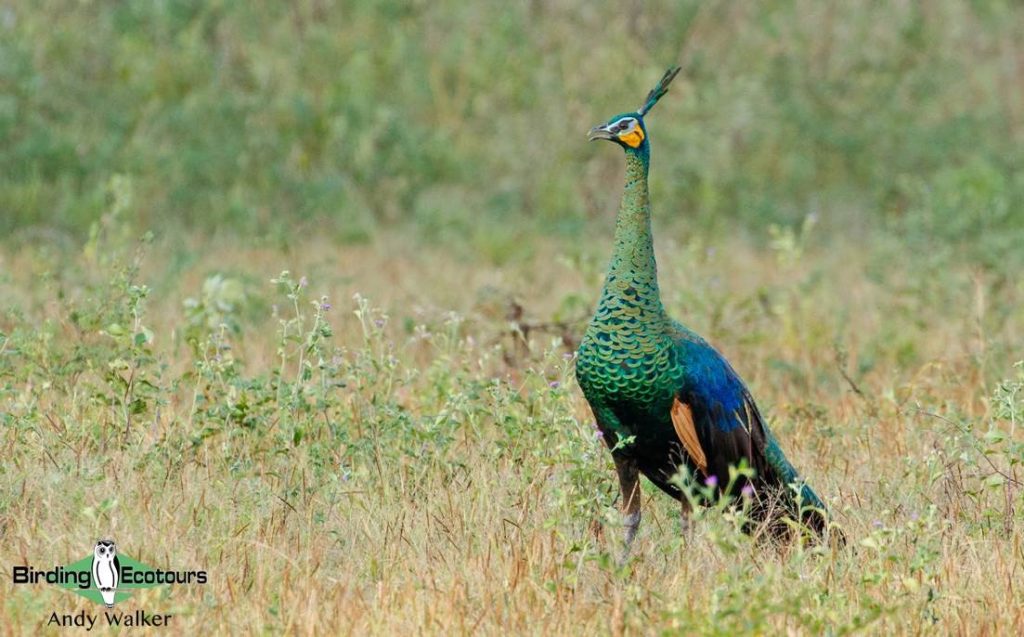
Day 11. Morning birding Kratie (Mekong), afternoon birding at Keo Seima Wildlife Sanctuary
We will take a morning boat trip on the Mekong River, where we will be seeking Mekong Wagtail and the Endangered (ICUN) Irrawaddy Dolphin. We might also spot the increasingly localized Grey-throated Martin, along with more widespread species like Pied Kingfisher, Indian Spot-billed Duck, and Indian Cormorant.
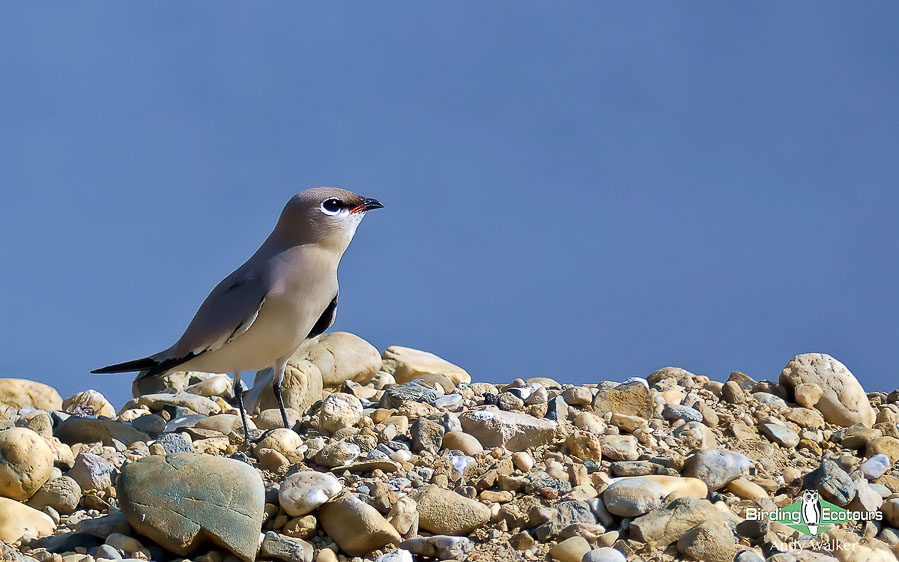
After our boat trip on the Mekong River, we will depart for our stay at Keo Seima Wildlife Sanctuary, located in the eastern plains of Cambodia, along the Vietnam border. The wildlife sanctuary contains bamboo forest, dry dipterocarp forest, evergreen and semi-evergreen forest and is one of Cambodia’s most important protected areas for a wide range of birds and other top wildlife. We will have plenty of time birding here over the next few days looking for the birds listed for Day 12. Along the way, time permitting, we will also look for the regal Green Peafowl, usually a shy species in this part of its range.
Overnight: Senmonorum
Day 12. Full day birding Keo Seima Wildlife Sanctuary
As we bird our way around Keo Seima Wildlife Sanctuary we will be looking for key targets like Siamese Fireback, Bar-bellied Pitta, Blue-rumped Pitta, Pale-headed Woodpecker, Red-vented Barbet, Indochinese Barbet, and Grey-faced Tit-Babbler along with more widespread but no less impressive species like Pin-tailed Green Pigeon, Ashy-headed Green Pigeon, Great Hornbill, Banded Kingfisher, Bay Woodpecker, Great Slaty Woodpecker, Asian Fairy-bluebird, Banded Broadbill, Golden-crested Myna, Crimson Sunbird, and (Langbian) Black-throated Sunbird. Two of the rather tough and secretive species found here include Orange-necked Partridge and Germain’s Peacock-Pheasant. Either will take some luck, but we will be listening out for their calls to try and gain visuals. Mammal highlights here could include the rare Black-shanked Douc Langur and Red-cheeked (Yellow-cheeked) Gibbon.
Overnight: Senmonorum
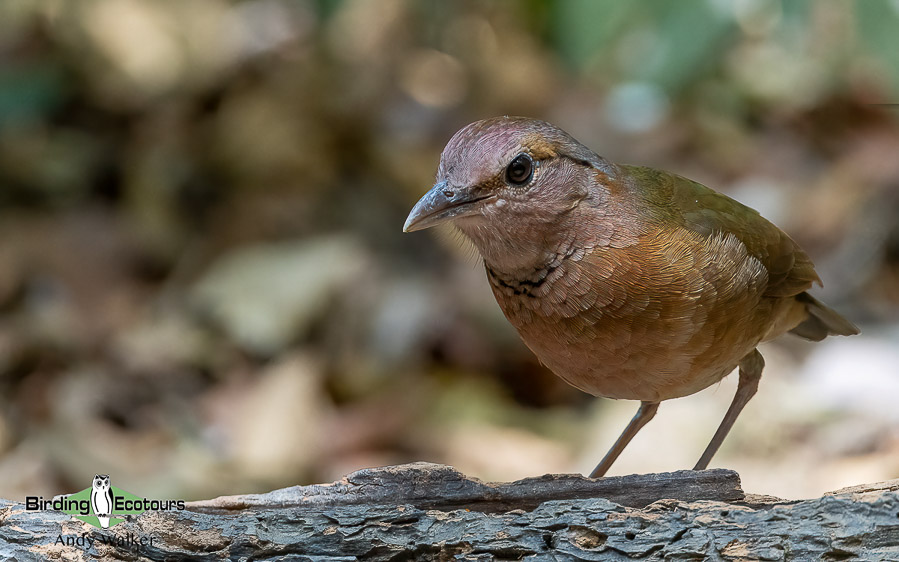
Day 13. Full day birding at Dak Dam Highland
Dak Dam is a hilly area of evergreen forest along the Vietnamese border. Here, the remaining forest patches hold some great birds, such as Pale-capped Pigeon, Red-headed Trogon, Orange-breasted Trogon, Blue Pitta, Silver-breasted Broadbill, Long-tailed Broadbill, Banded Broadbill, Indochinese Barbet, Blue-winged Minla, Silver-eared Mesia, White-cheeked Laughingthrush, Black-throated Laughingthrush, Rufous-capped Babbler, Grey-cheeked Tit-Babbler, Spot-throated Babbler, Black-chinned Yuhina, Black-headed Parrotbill, Black-browed Fulvetta, Maroon Oriole, Black-throated (Grey-crowned) Bushtit, and (Langbian) Lesser Shortwing. We will spend the day birding around the area trying to find as much as we can. It’s sure to be an interesting day with a lot of good possibilities.
Overnight: Senmonorum
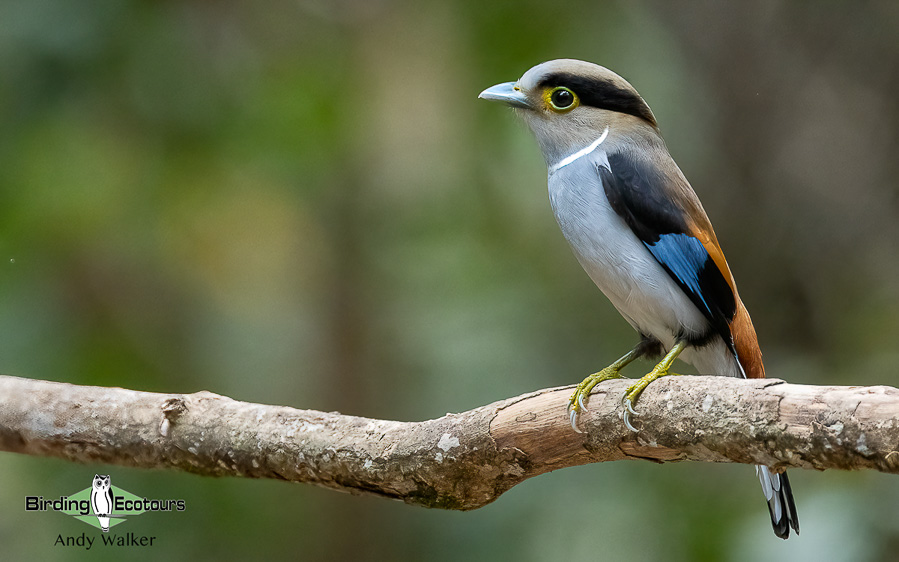
Day 14. Morning birding at Keo Seima Wildlife Sanctuary, afternoon to Phnom Penh for Cambodian Tailorbird and end of tour
After a final morning birding at Keo Seima Wildlife Sanctuary, we will commence our journey to Phnon Penh, making a stop at a site along the way to look for the recently described Cambodian Tailorbird. On reaching Phnom Penh, this exciting Cambodian bird tour will end.
Overnight: Not included
Please note that the itinerary cannot be guaranteed as it is only a rough guide and can be changed (usually slightly) due to factors such as availability of accommodation, updated information on the state of accommodation, roads, or birding sites, the discretion of the guides and other factors. In addition, we sometimes have to use a different international guide from the one advertised due to tour scheduling.
Download Itinerary